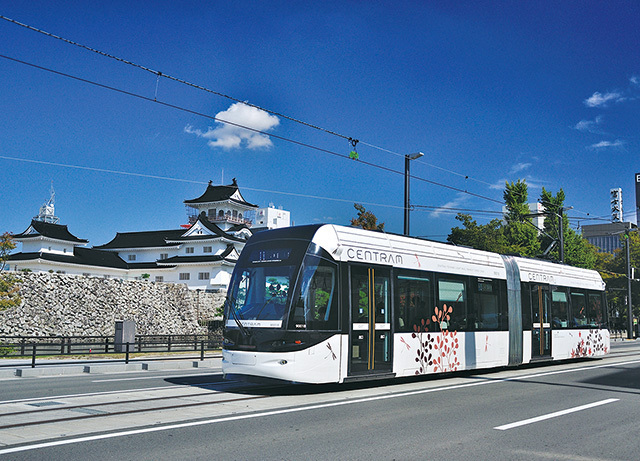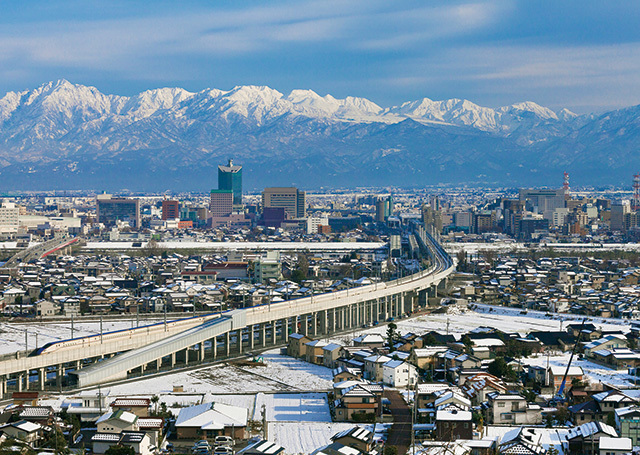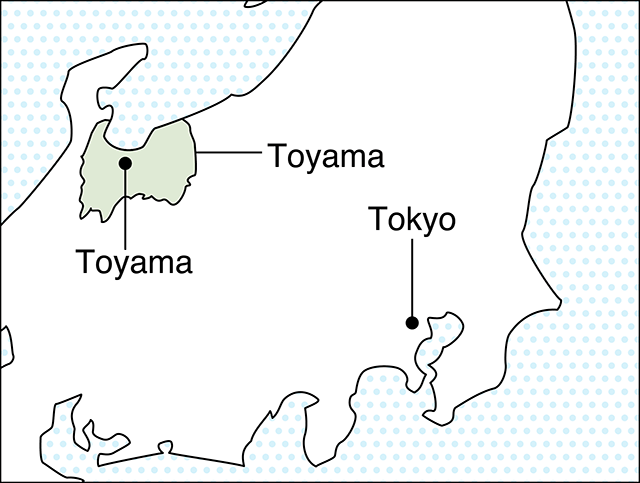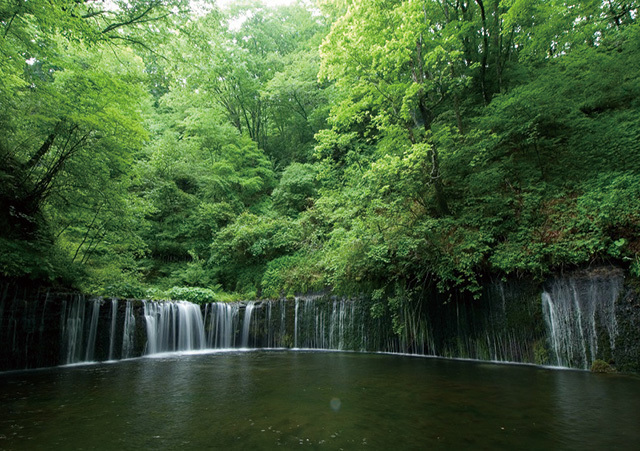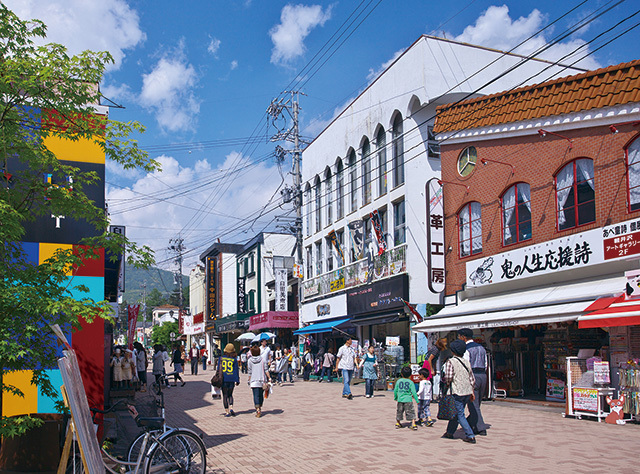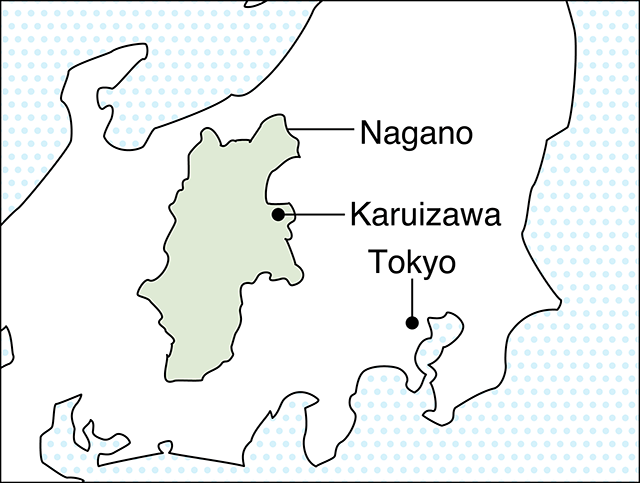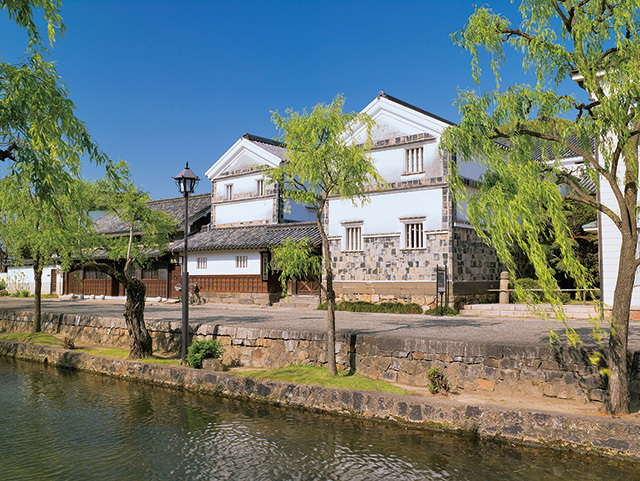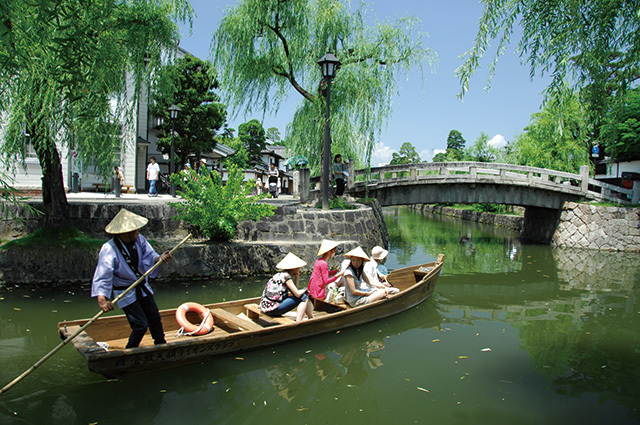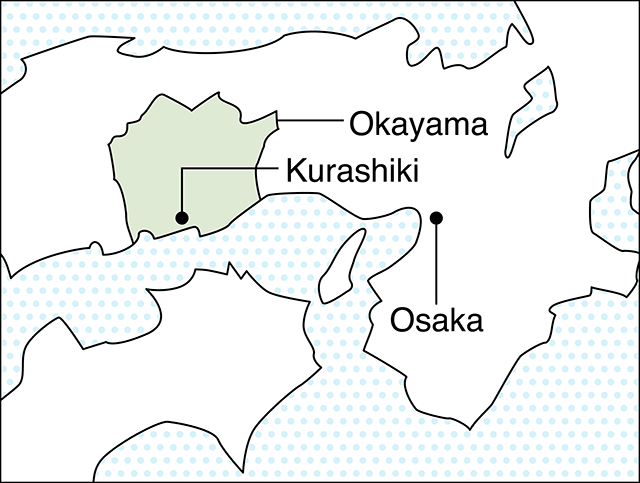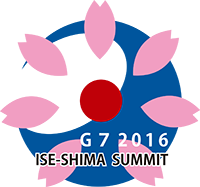Toyama: A Nature-Rich City with Environment-Friendly Policies
The city of Toyama, site of the G7 Environment Ministers’ Meeting, is about two hours from Tokyo on the Hokuriku Shinkansen, a high-speed railway line that came into service in March 2015. It is one of the principal cities on the Sea of Japan coast. The city is rich in nature, with features ranging from Toyama Bay, with a maximum depth of more than 1,000 meters (3,300 feet), to the Tateyama Mountain Range, with peaks of around 3,000 meters (9,800 feet). From April through June the Tateyama Kurobe Alpine Route, which provides an entryway to Toyama via the Northern Japan Alps, is flanked by great walls of snow reaching heights of about 20 meters (65 feet), created when the snow is cleared from the road—a breathtaking sight that enthralls tourists from Japan and abroad. Visitors to Toyama can enjoy sushi made with the bountiful seafood from Toyama Bay, along with local sake made with the clear water from the Tateyama peaks.
Toyama has adopted various environment-friendly policies, including the introduction of light rail transit (LRT) and the building of small hydroelectric power plants. In its “Compact City Policies” report, the OECD selected Toyama as one of five leading cities in terms of these policies.
A tram runs along the Centram loop line of Toyama’s light rail transit (LRT) system; in the background is Toyama Castle, the city’s symbol. Toyama is promoting use of LRT by distributing free-ride tickets at hotels within the city to tourists from abroad who spend the night there.
A view of Toyama’s urban center, including Toyama Station of the Hokuriku Shinkansen, against the backdrop the Tateyama Mountain Range towering around 3,000 meters in the distance.
Karuizawa: A Town Developing as a Resort Convention Site
Karuizawa, Nagano Prefecture, site of the G7 Transport Ministers’ Meeting, originally developed as a post town on the road from Edo (present-day Tokyo) to Shinano (present- day Nagano). Now it is about 70 minutes from Tokyo by Shinkansen high-speed rail, and it is one of Japan’s most popular highland resorts, with many vacation homes. This town is one of few places in the world to have hosted events for both the Summer Olympics and Winter Olympics.
Karuizawa’s visual attractions include old streetscapes showing the influence of Western culture on the town since the late nineteenth century. In addition, the town has become a major site for conventions of various kinds. A large hotel near Karuizawa Station, where Shinkansen trains stop, offers commodious meeting facilities. Visitors to Karuizawa can enjoy dishes made with highland vegetables grown in the town’s cool, nature-rich environs, as well as servings of soba, Japan’s traditional buckwheat noodles.
Shiraito Falls, one of Karuizawa’s famous tourist spots, is fed throughout the year by rainwater that percolates through mountain soil and emerges after about six years underground.
Kyu- Karuizawa Ginza is lined with shops selling crafts like Karuizawa- bori carving and foods like jam and highland vegetables.
Kurashiki: A City That Preserves Its Traditions and Culture
Kurashiki in Okayama Prefecture, site of the G7 Education Ministers’ Meeting, is one hour by Shinkansen high-speed rail from Osaka. Located on the Seto Inland Sea, it developed as a city of merchants, but it is now known as a city of culture and education—the site, for example, of the Ohara Museum of Art, famous as Japan’s first private museum of Western art. The Great Seto Bridge extends for over 13 kilometers (8 miles) to the south, connecting the city to the island of Shikoku on the other side of the sea. Kurashiki’s Bikan Historical Quarter preserves many Edo-period (1603–1868) merchants’ homes and earthen-walled warehouses and granaries.
Cotton has been a major crop grown in the Kurashiki area since the seventeenth century, and the city is now world-famous as a producer of high-quality denim goods. Kurashiki is also known for its seafood from the Seto Inland Sea and for the white peaches and muscats that grow in its mild climate.
Recently, the city has been working to attract tourists from other countries with ongoing measures such as providing Wi-Fi hotspots.
The Kurashiki Museum of Folkcraft, opened in 1948, was originally a rice granary. It is now the signature building of the city’s Bikan Historical Quarter.
Riverboats carrying cargo formerly plied the Kurashiki River, which runs through the Bikan Historical Quarter. Now boats carry tourists for rides along the river, preserving the area’s traditional ambience.






































































































